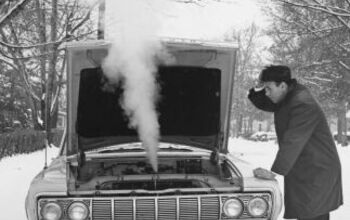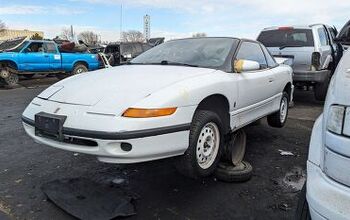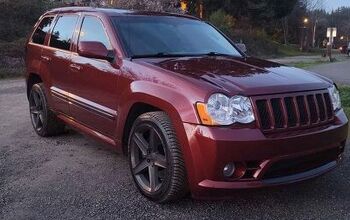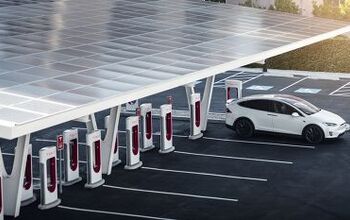MEMOIRS OF AN INDEPENDENT REPAIR SHOP OWNER: Cold-Weather Cause-And-Effect (not "Tall Winter Tales")
As long as it’s still the winter season in the Northern Hemisphere—more wintry for some than others, here in the U.S.—it seems appropriate to stay on that topic for a while longer, here on the “Memoirs” page.
Having spent much of my career as an auto tech and shop owner in the Southern California area, I really didn’t get much of an opportunity to solve cold-weather problems on customer vehicles—mainly because there just wasn’t (and still isn’t) much of that stuff going around, down there.
Moving to New York—and then Louisiana—in the ‘80’s quickly changed all of that.
Of course, most vehicles had carburetors back then; and compared to those equipped with fuel injection, they tended to be more susceptible to the cold—especially when accompanied by high-humidity conditions (of which there is no shortage in either locale).
This fact led to a number of personal cause-and-effect revelations, which, while unfamiliar to me, undoubtedly were familiar ones to the locals. They were interesting revelations, nonetheless; and I’m going to relate a couple of the highlights right now.
When it came to choke systems on most typical carburetors of the day, I found that choke setting was not terribly critical in SoCal, as long as the plate was fully open when the engine was warm. Yes, setting did become a bit more critical on “emissions” carburetors—and British vehicles always had to have a fully functional choke (technically referred to as “cold-start enrichment”), even on the typical Los Angeles “cold” start.
But drop the temperature down to anywhere at or below freezing, and any flaw—however subtle it may have been—made its presence known in no uncertain terms. Choke plate not closing enough? You might have to pump the living daylights out of the accelerator pedal just to get the engine fired and keep it running long enough to warm up, and run without stalling at idle. Choke vacuum break not operating (with a properly adjusted choke plate)? Sure, the engine would start right up, only to be shortly followed by pronounced “chugging” and massive amounts of black smoke out the tailpipe. On later “emissions” engines, the thermo-vacuum valves controlling this process would fail and cause the same sort of conditions. I personally owned a Honda Accord that experienced that problem. On GM cars of the day, even a “no-charge” alternator condition would cut power to the choke heater coil, and the choke would fail to open quickly and completely.
Unlike the “repair wiggle room” prevailing atmospheric conditions in the Southwest afforded, attempting some kind of witty bypass maneuver in true winter climes got you into more of a mess than biting the bullet and just making the O.E. system function by the book.
Another problem I ran across—especially during the winter in Louisiana—was a malfunctioning intake air control system wreaking havoc with vehicle driveability.
The customer would claim that they’d be motoring along without a problem—often at a steady state highway cruise—and the engine would lose power, and eventually sputter and shut off! If they’d let it sit for a few minutes, they could restart without problem, and resume cruise for about five to ten minutes before experiencing the power loss and stall all over again.
Now in Los Angeles, the only problem I had experienced with TAC (Thermostatic Air Control) on carbureted engines, was when the air door would stay closed off to cold air, and engine “ping” followed by “vaporlock” when returning to idle would ensue, due to excessive heat in the intake air. Yes, that problem would also occur—probably even more acutely—in the Deep South. Usually, the quick and temporary solution to that problem was to make sure that the air door stayed open to cold air only; without much concern for any consequence involving the need for hot air, at any point.
The strategy worked in the City of Lost Angels, but not in the State of LA. At least not for year-round vehicle use!
What would happen during the winter, if the TAC system was not providing enough heated air to the carb vis-à-vis the air filter housing, was the formation of ice around the throttle plate. If the ice buildup got heavy enough, it would literally shut off the engine! In the state of LA, it didn’t have to be really cold for this to happen, either. It could get so damp down there, ambient temperature only needed to drop to around 50F for that to happen!
The customer would always be surprised when they learned that this was the sole cause of the problem!
Stay tuned for more “revelations”, next week.
Phil ran a successful independent repair shop on the West Coast for close to 20 years, working over a decade before that at both dealer and independent repair shops. He is presently semi-retired from the business of auto repair, but still keeps his hand in things as a consultant and in his personal garage.
More by Phil Coconis
Latest Car Reviews
Read moreLatest Product Reviews
Read moreRecent Comments
- Master Baiter I thought we wanted high oil prices to reduce consumption, to save the planet from climate change. Make up your minds, Democrats.
- Teddyc73 Oh look dull grey with black wheels. How original.
- Teddyc73 "Matte paint looks good on this car." No it doesn't. It doesn't look good on any car. From the Nissan Versa I rented all the up to this monstrosity. This paint trend needs to die before out roads are awash with grey vehicles with black wheels. Why are people such lemmings lacking in individuality? Come on people, embrace color.
- Flashindapan Will I miss the Malibu, no. Will I miss one less midsize sedan that’s comfortable, reliable and reasonably priced, yes.
- Theflyersfan I used to love the 7-series. One of those aspirational luxury cars. And then I parked right next to one of the new ones just over the weekend. And that love went away. Honestly, if this is what the Chinese market thinks is luxury, let them have it. Because, and I'll be reserved here, this is one butt-ugly, mutha f'n, unholy trainwreck of a design. There has to be an excellent car under all of the grotesque and overdone bodywork. What were they thinking? Luxury is a feeling. It's the soft leather seats. It's the solid door thunk. It's groundbreaking engineering (that hopefully holds up.) It's a presence that oozes "I have arrived," not screaming "LOOK AT ME EVERYONE!!!" The latter is the yahoo who just won $1,000,000 off of a scratch-off and blows it on extra chrome and a dozen light bars on a new F150. It isn't six feet of screens, a dozen suspension settings that don't feel right, and no steering feel. It also isn't a design that is going to be so dated looking in five years that no one is going to want to touch it. Didn't BMW learn anything from the Bangle-butt backlash of 2002?





































Comments
Join the conversation
My Chevette pulled that trick on me across the state of Illinois once. The vacuum switch that triggered the warm airflow over the exhaust manifold failed. The resulting temps had me pulling over at every rest area and using the hand dryers in the bathroom to thaw my air filter. The warmth of the engine thawed the carb and I'd head out again, only to be 35-45mph top speed by the next rest area. I was on the road and focused on getting home. Knowing what happened now, it would have been a simple procedure to reroute the vacuum lines bypassing that switch and making it home with no drama.
I solved this on my '81 Eagle daily driver by installing a manual choke cable. SOOOO much more reliable!